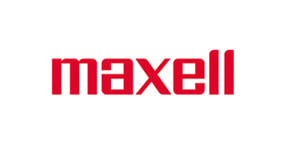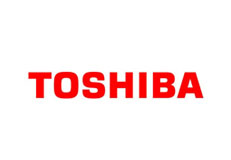Battery storage: expiration, self-discharge, and shelf life
While all batteries share similarities in the storage process, key differences and nuances exist that are chemistry specific. In this post we will discuss the storage of nickel-based (i.e., Ni-MH and Ni-CD), lithium, alkaline, and lead acid batteries. We will also take a look at the effects of capacity loss and regulations for shipping and travel.
First, it is important to clarify the meaning of key terms:
Battery expiration. Expiration as applied to energy storage devices does not mean the same as its application to food items. An expired battery denotes the inability of its manufacturer to guarantee its full charge upon a certain date. As a rule of thumb, when your battery’s total self-discharge is over 20 percent, you can consider the battery expired. You can find your battery’s expected date of expiration on the packaging or the battery. Most recognized manufacturers set it off from surrounding text with distinguishing features such as boxing, color, or separation.
Battery self-discharge rate. As soon as a battery is manufactured, it immediately begins to lose its charge—it discharges its energy. Discharge occurs at variable rates based on chemistry, brand, storage environment, temperature. Self-discharge denotes the rate at which the battery self-depletes in idle storage. All batteries self-discharge over time even when idle.
Battery shelf life. This term is closely connected with self-discharge. Where self-discharge focusses on rate of speed, shelf life is concerned with duration. Shelf life is the length of time your disposable battery will retain its charge unused, or in the case of rechargeable batteries, how long before it will require a charge or is considered spent.
Battery storage similarities
Apart from capacity during storage, the ideal, ambient storage temperatures is the same for battery chemistries across the board with some nuances at the extreme ranges. Another factor that is widely shared is battery contact with other materials.
Temperature. Storage recommendation for most batteries is in an ambient temperature of around 59°F (15°C) and low humidity. The range at polar extremes allows for –40°F to 122°F (–40°C to 50°C). The clearly freezing temperature at the lower extreme of -40°F/C will not freeze certain battery chemistries, for example, lead acid; but such an extremity can negatively affect its chemical composition. (The 32°F/0°C freezing point applies to water, not chemical compounds.) In fact, batteries should never be permitted to freeze, and refrigeration is neither required nor recommended by battery manufacturers. Conversely, high temperatures accelerate the rate of self-discharge.
Contact with other items. Whether being transported or stored, batteries should never come into contact with metallic items or other batteries. Tossing your batteries into a bin containing paper clips or other metallic items for later reuse, or into a purse or pocket containing keys or coins is strongly discouraged. Contact with other batteries or metallic items that can substantially increase the risk of short circuiting. Batteries are best stored in their original packaging. Where this is not possible, batteries should be individually wrapped in plastic.
The flow of excess current in a short-circuited battery causes its temperature to rise, making it significantly more susceptible to leakage. Reusing older batteries with newer one, or installing batteries of mixed capacities into a device, also makes them more prone to leakage. Battery leaks—in most cases, potassium hydroxide battery acid—is corrosive to both electronic components and organic tissue. For this reason, batteries should be removed from devices and equipment before storage.
Exercise caution when handling a spilled battery. Do not touch your mouth, eyes, or nose; and thoroughly wash your hands after handling a leaked battery.
Nickel-based batteries
Nickel-based Ni-MH batteries and Ni-CDs should be stored at about 40 percent state of charge (SoC) to curtail age-related capacity loss while keeping the battery operational and allowing some self-discharge. Although it is not recommended, they can be stored in a fully discharged state with no apparent adverse effects to their integrity. Maintaining some charge, however, will allow for faster priming when taken out of storage.
Because of its flat discharge curve, the temperature effects on voltage, and the agitation caused by charge and discharge cycles, ascertaining a nickel battery’s state of charge is not simple; however, it is also not crucial. If it is depleted, simply charge it, and store it cool and dry.
An Ni-MH battery can withstand 3–5 years of storage, even at zero voltage. It is widely held that priming is necessary when voltage drops below 1V/cell and can serve to reverse some of its reduced capacity. Nickel-cadmium batteries have a good performance reputation even after extended storage.
Lithium batteries
Lithium-ion batteries must be stored in a charged state, ideally 40 percent. Lithium batteries, including lithium coin cell batteries, have virtually no self-discharge below approximately 4.0V at 68°F (20°C). Rechargeable lithium-ion batteries, such as the 18650 battery, boast remarkable service life when stored at 3.7V—up to 10 years with nominal loss in capacity. A precise 40–50 percent SoC level for storage should not be a priority, but a more accurate reading is obtainable by resting the battery 90 minutes before taking the reading. Alternatively, you can overshoot the discharge voltage by 50mV or increase it by 50mV on charge.
Li-ion batteries should not sink below 2V/cell for any extensive period. Apart from triggering a sleep mode, it encourages the formation of copper passages, called shunts, which can elevate self-discharge. Subsequently charging the battery can cause the cells to become unstable, generate excessive heat or display other aberrations. Stressed Li-ion batteries may continue to function normally but are more easily affected by mechanical abuse. A lithium-ion battery kept below 2.00V/cell for more than a week or that fails to normally recover its voltage after storage, should be safely disposed (i.e., recycled). Caution must be taken in handling lithium-based batteries, as mishandling liability lies with the user, not the manufacturer.
Alkaline batteries
Alkaline batteries, both cylindrical and coin batteries such as the LR41 or the LR43, should simply be stored at cool room temperature and about 50 percent relative humidity. Typically, modern alkaline batteries, and other primary batteries such as the 3.6–3.7 -volt lithium batteries, can be stored for up to 10 years with moderate capacity loss. As with all batteries, they should be kept away from extreme temperatures and should never be frozen. Batteries freeze more easily when kept in a discharged state. As noted, freezing temperatures can adversely alter the cell’s molecular structure. At the other extreme, heat hastens the self-discharge rate and can create stress.
Lead acid batteries
Charge a lead acid battery before storing. Lead acid batteries can be stored for up to 2 years. It is generally advisable to periodically monitor the battery voltage and charge it when it falls below 70 percent state-of-charge (SoC); however, lead batteries typically have brand specific readings. For example, some manufacturers may recommend allowing the SoC to drop to 60 percent before recharging the battery. It is, therefore, good practice to always consult the manufacturer’s manual for your specific lead acid battery.
A process known as sulfation is induced with low charge. Sulfation is an oxidation layer that forms on the negative plate and impedes the flow of current. After excessively extended storage, it may prevent charging small lead acid cells such as Toyo, Yuasa, Hawker (Enersys) Cyclon, and others. In its early stages, a topping charge, cycling, or the application of an elevated voltage may reduce the capacity losses. With elevated voltage application, the charging current converts the sulfate crystals into active material in about 2 hours. The cell resistance subsequently drops, and the charge voltage gradually normalizes. The cell is able to accept a normal charge when it is in the range of 2.10–2.40 volts. This process should not be undertaken if the power supply does not feature current limiting.
When charging a sealed lead-acid (SLA) battery with an elevated voltage, protect it from damage by setting the current limit to the lowest practical setting and observing the battery voltage and temperature during charge. Never allow the battery to rupture. Accidental skin contact with electrolyte, lead, or cadmium can result in burning and tissue damage. Wash any area of contact promptly. In case of eye contact, thoroughly flush with water and consult a doctor immediately.
A look at Capacity loss
We have learned that self-discharge occurs with all batteries during storage. Charging the battery prior to use serves to restore it to a reasonable state of charge.
The following table illustrates how the two main factors—heat and state of charge—affect capacity of different battery chemistries over a twelve-month period (except as otherwise specified). It also comparatively demonstrates why you should never store lithium batteries fully charged.
| Temperature | Lead acid any SoC |
Nickel-based 100% SoC |
Lithium-ion | |
| 40% SoC | 100% SoC | |||
| 32°F (0°C) | 97% | 99% | 98% | 94% |
| 77°F (25°C) | 90% | 97% | 96% | 80% |
| 104°F (40°C) | 62% | 95% | 85% | 65% |
| 140°F (60°C) | 38% after 6 months |
70% | 75% | 60% after 3 months |
However, there is a secondary loss that is not recoverable and permanently lowers the capacity of the battery. This can be caused by:
- Hosting devices or batteries being subjected to unfavorable temperatures, for example, tablets or cameras left in a car parked in the hot sun. High temperatures particularly stress lead acid nickel-based batteries.
- Fully charged host device being left plugged in outlets for prolonged periods of time, or batteries being left in battery charger drawing current.
- Batteries being stored outside their recommended capacity range. For example, Li-on capacity losses are heightened when stored fully charged than when stored at a 40 percent SoC.
Shipping your battery
Storing Li-on batteries partially charged makes them last longer and diminishes their volatility in shipment. Removable lithium-ion battery packs, such as you might find on the underside of your laptop, should be shipped at 30 percent SoC as mandated by both International Air Transport Association (IATA) and Federal Aviation Administration (FAA). In practice, aviation authorities are typically less exacting, and stress more the importance of clearing a 50 percent SoC threshold. They are also less stringent with device-integrated Li-ion packs, such those which are increasingly being built into mobile phones devices. Regulations and enforcers are not so forgiving when the battery composition is not clear and mislabeling battery chemistry is inexcusable.
Because of the role of temperature, active chemicals, and the typically flat voltage curve of lithium batteries, correlating state of charge to voltage can be imprecise. To achieve a 30 percent state of charge in a device such as a notebook, mobile phone, or tablet, discharge your battery and terminate the discharge at 30 percent charge based on the embedded battery management system (BMS) installed in your device. While the reading is not always accurate, the requirements are not unreasonably strict. If in doubt, you can optionally discharge your battery a single bar in your device’s power level indicator, or to the ‘low battery’ or similar alert. In such cases, it is strongly advisable to apply a full or near-full charge immediately upon arrival. Keeping Li-ion battery packs discharged for weeks or months in shipping could put them in sleep mode by their protection circuit; but they could be re-awakened. The waking feature can also be found in some battery chargers. Modern lithium-ion chargers feature an on-command utility called AirShip that can ready your battery pack to the required 30 percent state of charge.
To learn more about battery care and storage, take a look at these articles:
Practical tips to maximize battery life
Rechargeable battery care chart and takeaways










